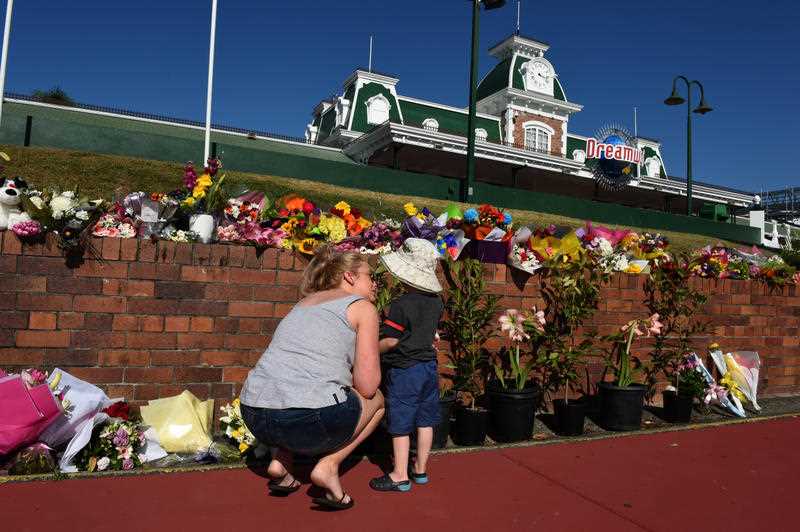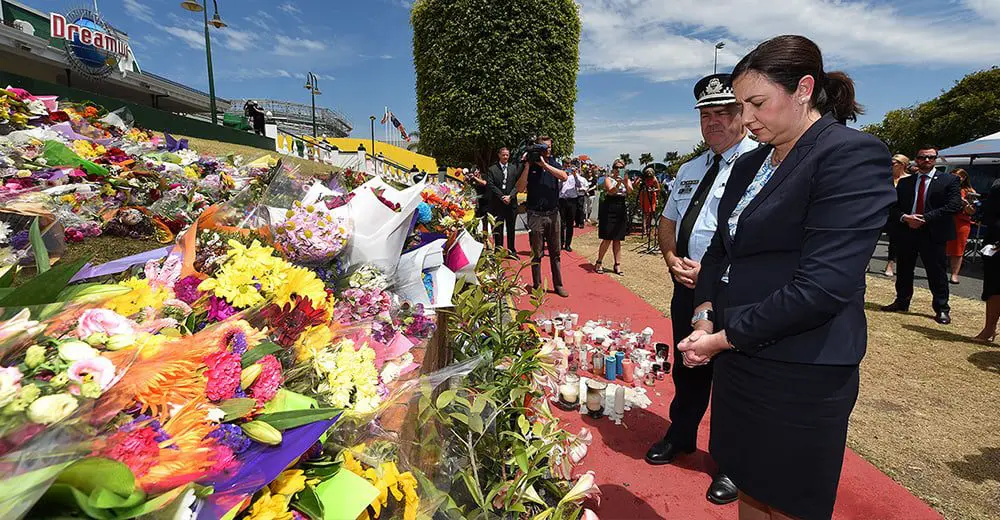When disaster strikes on holiday, whether man-made or accidental, the sorrow felt sends a shockwave across the industry.
There are people involved. There are families involved.
It’s natural to feel an emotional tie to people we don’t know but can easily relate to.
The fact that tragedy could hit on a beautiful sunny day in a place so familiar seems surreal.

Floral tributes outside Dreamworld. Image Source: SBS
The conduct of Ardent Leisure, the owner of Dreamworld, is rightly front and centre in the fallout of the shocking 25 October accident that left four people dead.
Ardent’s conduct from its initial statement defiantly insisting its rides were ‘fully compliant with all relevant safety standards’ through to being caught out for not properly liaising with the victims’ families has all the tell-tale signs of either a poorly planned, or non-existent crisis management plan.
It’s not as if ride failure wasn’t foreseeable in a theme park – somewhere, somehow equipment has failed and someone or a few people have missed something in the concept, maintenance or operation of the ride.
That in itself is clearly a problem.
But, in what is already a case book study of what not to do, Ardent’s response has amplified the reputation damage and how.
So what did Ardent do so wrong?

Rather than expressing regret on learning of the terrible human cost, the company moved immediately into defence mode.
Its failure to shut down the park immediately when the accident happened and its intended re-opening for business just three days after the tragedy showed a jaw-dropping understanding of the horror the wider community felt.
The unfortunate timing of Ardent’s AGM reinforced the perception that the company was more interested in profit, reinforced by the failure to delay the meeting or pause in honour of those who lost their lives, and the decision to proceed to vote on executive bonuses.
The company has now taken the steps it should have made two weeks ago, announcing the permanent closure of the Thunder River Rapids ride out of respect to the victims as well as a park-wide review of all rides and operating systems.
Too little, too late.
What steps should have been taken?
A crisis management plan is something every organisation and business hope they never have to use, but the ramifications of not having one – or of having one and not trusting in its currency enough to use it – are much worse.
Ardent Leisure, its Board and its management will bear the emotional, financial and reputational cost for many more months as the company moves through the coronial inquest and beyond.
While management is now trying to redress the situation through apologies and acknowledgements, allegations of complaints, injury reports and maintenance concerns mean they have a very difficult path ahead of them.
When disaster strikes, you need to take every possible measure to ensure that the people affected, your employees, suppliers and business partners and the public know that those impacted are your immediate focus, that everything is being done to find the cause, and that you are taking every step necessary to ensure it never happens again.
This is sadly where Ardent Leisure, the owners of Dreamworld have failed, and they have failed miserably.







